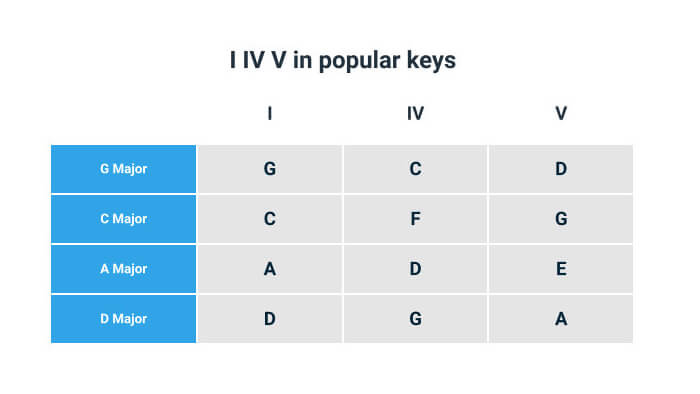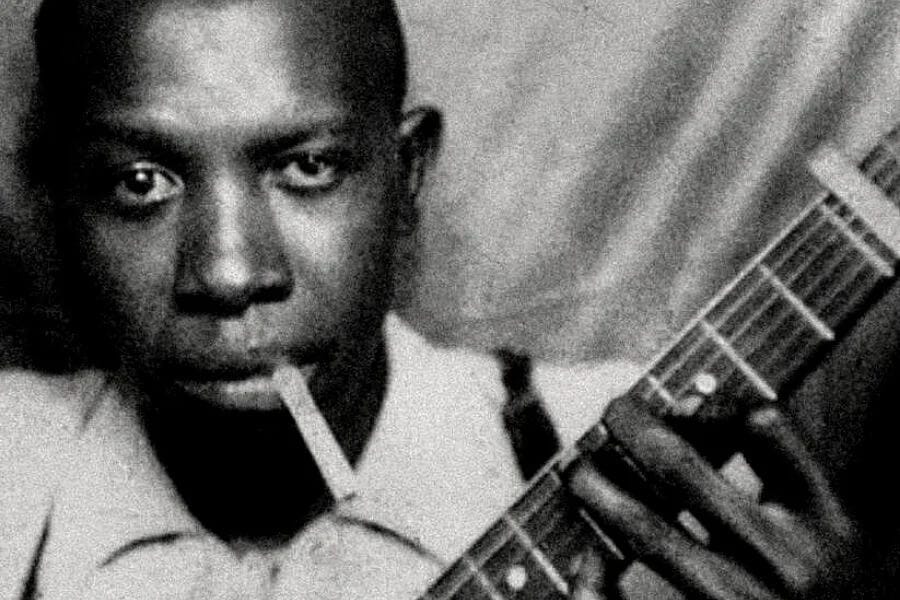Six strings,
three chords,
big dreams.“This Thing Called Life,” Richard Ashcroft
Most of us guitarists picked up the guitar because we wanted to play songs. Some of us heard that we only needed “three chords and the truth” and heeded the call. It sounded so simple. Learn a few chords and you can play thousands of songs. If it was only as simple as that. A journey of a thousand miles begins with a single step, no big deal there.
Regrettably, the person who tells you that learning guitar isn’t difficult usually disappears before explaining why it’s so easy. So, let’s elaborate on one of the easier aspects of learning guitar - the three chord song.
Playing popular music means reusing a lot of the same chords. A lot of classic songs have simple chord progressions. Being catchy and familiar is what makes them stand out. One of the most common chord progressions is the “One Four Five.” In Roman Numerals it’s spelled: I - IV - V.
Understanding chord progressions helps you learn more songs, figure out songs by yourself, write your own songs and play well with other musicians.
Good stories need a beginning, a middle and an end. The I - IV - V tells a great musical story. There are other chord progressions we probably hear more often, but really knowing the I - IV - V is important for a lot of practical reasons.
Give Me One Reason
The I - IV - V is also known as the 12 bar blues, although it’s not exclusively used in blues. You can also hear it in pop, folk, country, rock, punk and more. “Give Me One Reason” by Tracy Chapman is a great example of what the I - IV - V sounds like. It’s one of those songs you can sing along to the first time you hear it. The chord progression is so distinct, even someone with no musical background knows exactly when the singing is about to start.
Tons of classic songs use the I - IV - V progression, including “Blowin’ in the Wind”, “Ring of Fire” and “Johnny B. Goode” to name a few. As you get to know the progression it becomes easier to hear it in the music you’re listening to. This is an important step in training your ear to recognize patterns in music.
Figure out songs quickly
If you want to play songs by ear you should learn the basic three chord progression as soon as possible. Figuring out which chord to use next is a basic choice when a song only has three chords.
Here’s the I - IV - V progression in a few popular keys:
Quite often a three chord song will begin and end on the same chord - that’s the I chord. It’s a good indicator of the song’s key. The beginning and the end of a three chord song should feel like home. It’s a stable place that should feel comfortable returning to.
The IV chord creates a definite movement away from home. It’s a pleasant shift and we could easily stay on this second chord. Songs that fade out often fade out over the IV chord, rather than having a big ending.
The V chord is where the musical story picks up a lot of tension. If our progression is telling a story, this is the climax, the most tense and unsettling part of the story. Our song has to get out of this place and return to the comfort of the I chord.
The Origins of I - IV - V
No one really knows exactly where the I - IV - V comes from. But contemporary music owes a lot to the country and delta blues music of the early twentieth century. Artists like Robert Johnson and Muddy Waters pioneered a guitar style that influenced much of the music of the twentieth century - from Chuck Berry and Elvis Presley to the Beatles and Led Zeppelin, all the way up through today’s hard rock and metal bands.
But where did the original blues artists come up with their chord changes? Early blues music reflected the enduring struggles of the American South after emancipation. Blues was a secular foil to gospel music. It had a more immediate connection to everyday life than the spiritual gospel music. Materially the topics differed, but the music was very similar. Gospel typically features a shift from the V chord to the I chord. Lines end with an “Amen” where the “A” is sung over the V and the “men” arrives on the I chord. It was a powerful chord change that would have been as familiar to listeners then as “Baby Shark” is to us.
The Fade Out
Three chord songs are less likely to have fade outs. Bob Dylan’s 60s folk music is generally based on blues and simple ballads. His frequent use of I - IV - V is as insistent on cold endings as anything AC/DC ever did. You’re never left guessing about when a song is going to end.
Don’t fool yourself into thinking a 12 bar blues is only for the blues. Try playing I - IV - V chord progressions in any style that suits you. With repeated use you’ll start to feel the chord changes. Also keep your ears open. Try to recognize it in songs you hear in passing. To be fair, most songs you hear today will probably have four chords in the progression. But three out of four ain’t bad.







I've always felt that learning and understanding the I-IV-V progression was an important key to unlocking real growth for guitar players. Everything else seems to become clearer; intervals, chord and note relationships, everything. This should be among the first 'theory' lessons beginners get once they are comfortable with playing and changing basic chords.